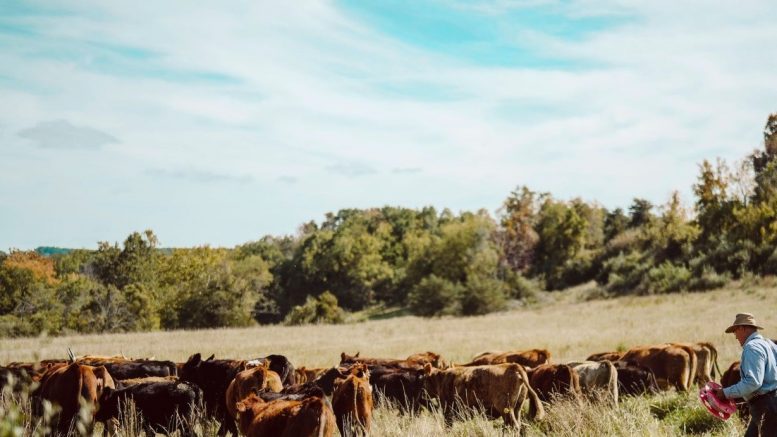Original article reprinted with permission from Joel Salatin and Polyface Farms
Our Tenpenny Report writers ran across the blog from Polyface Farms, started in 1961 by William and Lucille Salatin in Virginia’s Shenandoah Valley. We’re so glad we did. This farm represents America’s premier non-industrial food production oasis. The family believes that the Creator’s design is still the best pattern for the biological world and their environmentally-friendly farming practices are the gold standard worldwide. They don’t use mRNA vaccines on their cattle, and here’s what they have to say about it.
____________________________
Many folks wonder what the Polyface position is on vaccinations in general, and the new mRNA materials in particular.
In short, we don’t use any of it. But please read on for a more complete understanding.
We used vaccines twice in our history, both now about 20 years ago. The first was in chickens and the other was in beef. A lady asked us to raise 500 laying hens for her because she didn’t feel comfortable starting the chicks. We said yes but when it came time for them to lay, she changed her mind and didn’t want them.
We hadn’t prepared for 500 extra chickens and didn’t have anywhere for them to go. That spring was cold and damp. We kept them in the brooder house hoping the weather would clear so we could put them outside. A week turned into two weeks. They got crowded. Not something you’d want to take a picture of—unless you were working for an animal welfare group.
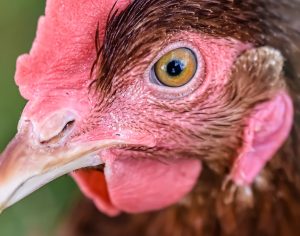 By the time the weather broke enough to get them out, they were stressed. They contracted a relatively weak virus called Marek’s disease and we lost most of them. Marek’s disease is kind of a cross between respiratory infection and coughs, and this was a common problem in the early 20th century before the widespread use of vaccines and antibiotics. It’s highly communicable and we were unwilling to kill and incinerate every chicken on the place to start over. So for two or three years, we vaccinated our chicks against Marek’s as a layer of protection until the virility of the disease could dissipate. It did, and we quit vaccinating, and have never had a problem since.
By the time the weather broke enough to get them out, they were stressed. They contracted a relatively weak virus called Marek’s disease and we lost most of them. Marek’s disease is kind of a cross between respiratory infection and coughs, and this was a common problem in the early 20th century before the widespread use of vaccines and antibiotics. It’s highly communicable and we were unwilling to kill and incinerate every chicken on the place to start over. So for two or three years, we vaccinated our chicks against Marek’s as a layer of protection until the virility of the disease could dissipate. It did, and we quit vaccinating, and have never had a problem since.
The point? The disease was our fault.
Case number two. We rented a nearby farm property to get more pasture to expand our beef numbers. This place had acres of thick, 12-foot-high blackberry patches, some covering as much as 2 or 3 acres. The landowner didn’t want us to mow them down because they provided a wildlife habitat, but the vines were spreading and we had plenty of edge and steep spots for habitat. The place was not lacking for wildlife habitat.
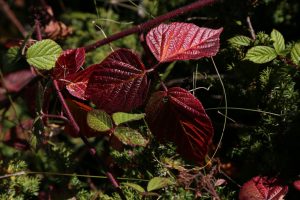 We decided to start our quiet under-the-radar eradication program by stomping and tromping them out with the cattle by placing the mineral box in the brambles. We took a herd of about 70 calves weighing 500-600 pounds each over there and after a week, one died. The next day another one. The next day two. That never happens at Polyface and we knew we had something terribly wrong. We called the veterinarian and in 5 minutes he had our answer: blackleg.
We decided to start our quiet under-the-radar eradication program by stomping and tromping them out with the cattle by placing the mineral box in the brambles. We took a herd of about 70 calves weighing 500-600 pounds each over there and after a week, one died. The next day another one. The next day two. That never happens at Polyface and we knew we had something terribly wrong. We called the veterinarian and in 5 minutes he had our answer: blackleg.
It’s a 100 percent deadly condition that attacks the nervous system, inducing quick paralysis and death.
Largely eradicated through the use of vaccines, the protozoa that causes blackleg stays in the soil for decades. The only way to get ahead of it was to vaccinate the herd, which we did, and that stopped it immediately. But that didn’t sit well; we don’t use vaccines and don’t want to be dependent on them. Why, of all our animals and on all our ground, did this one herd, at this time, on this place, suddenly succumb to blackleg?
We started looking through our old cattle books—quite a collection we’ve put together over the years—and every single one said it was ubiquitous and vaccination was the only remedy. But in the last book, the last paragraph, we found an Aha! moment: “Often induced by anaerobic puncture wounds caused by thorns and brambles.” Voila! There was the answer. We’d turned these cattle into veritable pincushions in the blackberry patch, and overrun their immune systems with abuse. Our fault.
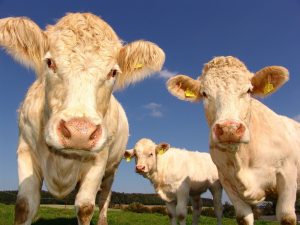 We presented this information to the landowner, who promptly gave us permission to mow the brambles, and we’ve never had a problem since and never vaccinated again. The point of this is that in our experience, things people vaccinate for are caused by us. We stress animals or don’t feed them right or don’t pick robust animals.
We presented this information to the landowner, who promptly gave us permission to mow the brambles, and we’ve never had a problem since and never vaccinated again. The point of this is that in our experience, things people vaccinate for are caused by us. We stress animals or don’t feed them right or don’t pick robust animals.
How do you know which animals have a good immune system if you cover up weaknesses with vaccines? By taking away the crutches, the robust animals thrive and nature weeds out the weak. That’s the way we gradually move immunological vibrancy forward. Sure, losing an animal is no fun, but never knowing who is strong and who is weak is no fun either because you can never make immunological progress.
Interestingly, government-sanctioned organic certification takes no position on vaccination. Nor does it take a position on the now genetically-manipulated mRNA counterpart. The livestock industry began substituting mRNA for old-style vaccines in poultry about 10 years ago, in pork about 5 years ago, and in beef about 2 years ago. Yes, it’s in the supermarket meat counter. And organic certification does not prohibit its use nor does it need to go on any label.
Two more things. Polyface does purchase some young animals from other ranchers. We don’t birth piggies; we buy weaned piggies and raise them up for you to enjoy as bacon and pork chops. We know one piggie supplier that does use an old-style vaccine. Some of the weaned calves we purchase have some old-style vaccines. We would love to get vaccine-free completely from these guys, but we fight one battle at a time. Nobody we do business with uses mRNA.
Finally, what about these vaccinated critters? We realize we’re being ultra-transparent here and opening ourselves up for backlash, but hang in there. First, they are all very young. And the vaccination regimen is only one or two, not 60-couple like humans are now supposed to get. If childhood vaccinations had never gone beyond what they were in 1950, the anti-vax movement may have never gotten a footing. The cocktail seems to be what is most deadly, and none of the baby pigs or weanling calves we buy from hand-picked farms are subjected to multiple injections. It’s more like things were in 1950, before autism, food allergies, and ADHD.
Let’s finish with a quick look at detox. How does nature detox? The number one agent is chlorophyll. Guess what’s in grass, clover, herbs, and weeds? Chlorophyll. Lots of it. Because all our animals enjoy a life on and with access to green salad (fresh pasture), the chlorophyll gradually works its detox magic, and by the time these animals grow into maturity and we harvest them, they’ve had copious amounts of greens. Nature offers a way to cleanse. When animals spend their lives in a factory farm, devoid of green material, the toxins build up rather than excrete.
The calves born to our cows (brood cows) never receive a vaccine. Ditto for the lambs. Ditto for the chickens, although the chicks we buy for broilers (meat) come from parents who were vaccinated, so that’s one generation removed.
We hope this open-handed treatment of a touchy subject helps your understanding and gives you a bit of the back story behind the short statement “Polyface does not use vaccines of any type.” Thank you for your interest and loyalty in healing the land one bite at a time. Your children thank you.
+++++++++++++++++++++++++++++++++++++++++++++++++++++++++++++++++++++
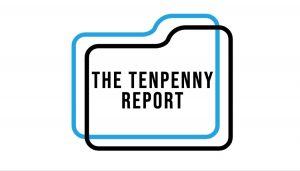 Like what you’re reading on The Tenpenny Report? Share this article with your friends. Help us grow.
Like what you’re reading on The Tenpenny Report? Share this article with your friends. Help us grow.
Get more of Dr. Tenpenny’s voice of reason at her website.
Join our list here
Make a donation here (and thank you!)
++++++++++++++++++++++++++++++++++++++++++++++++++++++++++++++++++++++
 Joel Salatin may be the world’s most famous farmer. He wants everyone to farm like a lunatic, and says so in his blog. Polyface Farms operates on several core principles. One is transparency–they have no trade secrets and anyone is welcome to visit the farm anytime. They are a grass-based farm, meaning their livestock and poultry eats “salad bars” which offer landscape healing and nutritional superiority. They offer their animals a habitat that allows them to be distinct, meaning respecting the pigness of the pig. Their wish is for everyone to seek food closer to home. They have moral and ethical boundaries to farming. For example, cows are herbivores, not omnivores; that is why Polyface has never fed their cows dead cows like the United States Department of Agriculture encouraged (the alleged cause of mad cows). They focus on healthy soil because healthy soil creates healthy food.
Joel Salatin may be the world’s most famous farmer. He wants everyone to farm like a lunatic, and says so in his blog. Polyface Farms operates on several core principles. One is transparency–they have no trade secrets and anyone is welcome to visit the farm anytime. They are a grass-based farm, meaning their livestock and poultry eats “salad bars” which offer landscape healing and nutritional superiority. They offer their animals a habitat that allows them to be distinct, meaning respecting the pigness of the pig. Their wish is for everyone to seek food closer to home. They have moral and ethical boundaries to farming. For example, cows are herbivores, not omnivores; that is why Polyface has never fed their cows dead cows like the United States Department of Agriculture encouraged (the alleged cause of mad cows). They focus on healthy soil because healthy soil creates healthy food.

